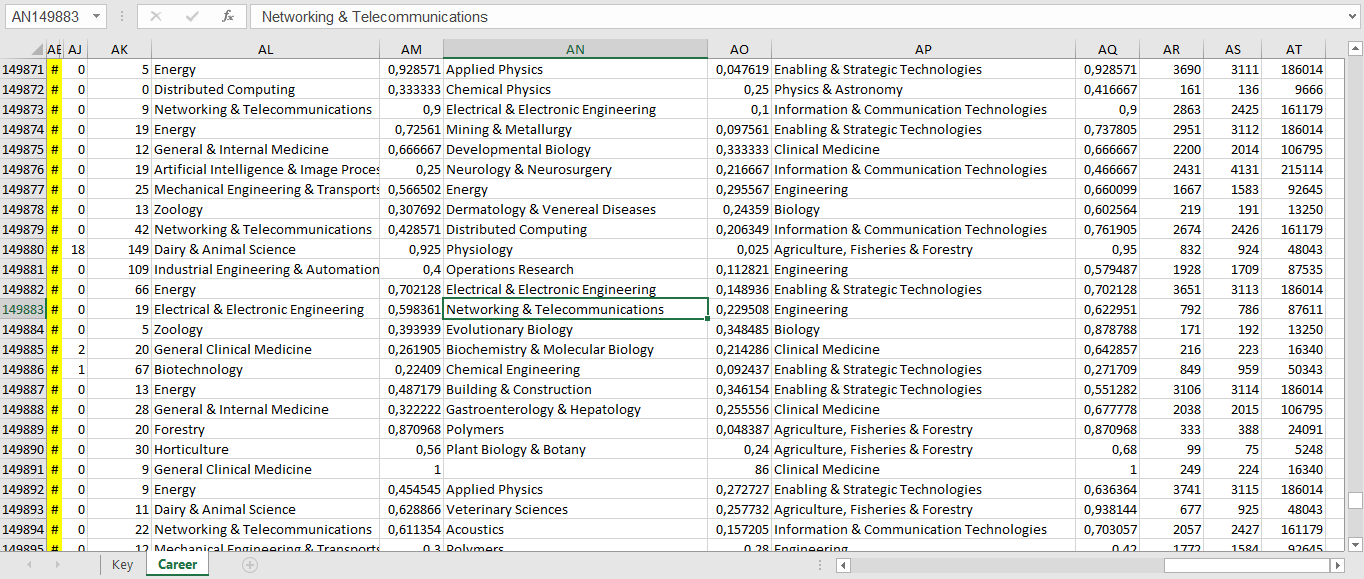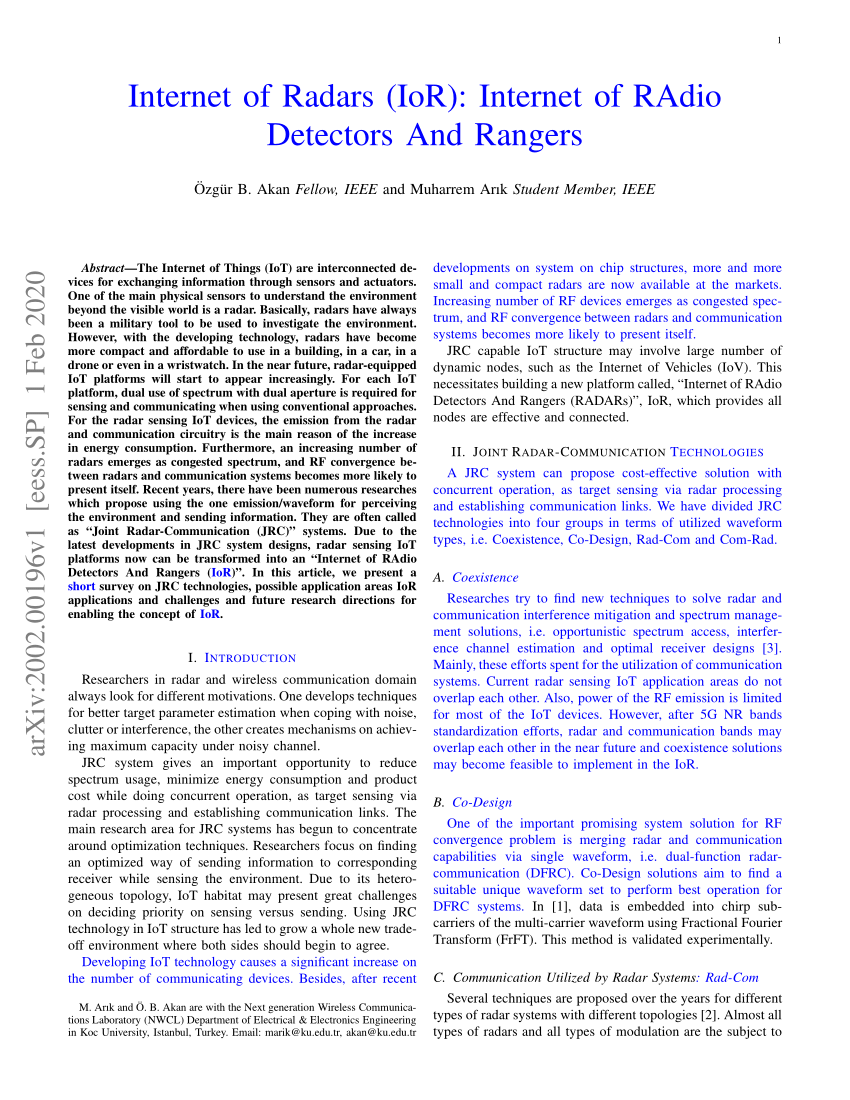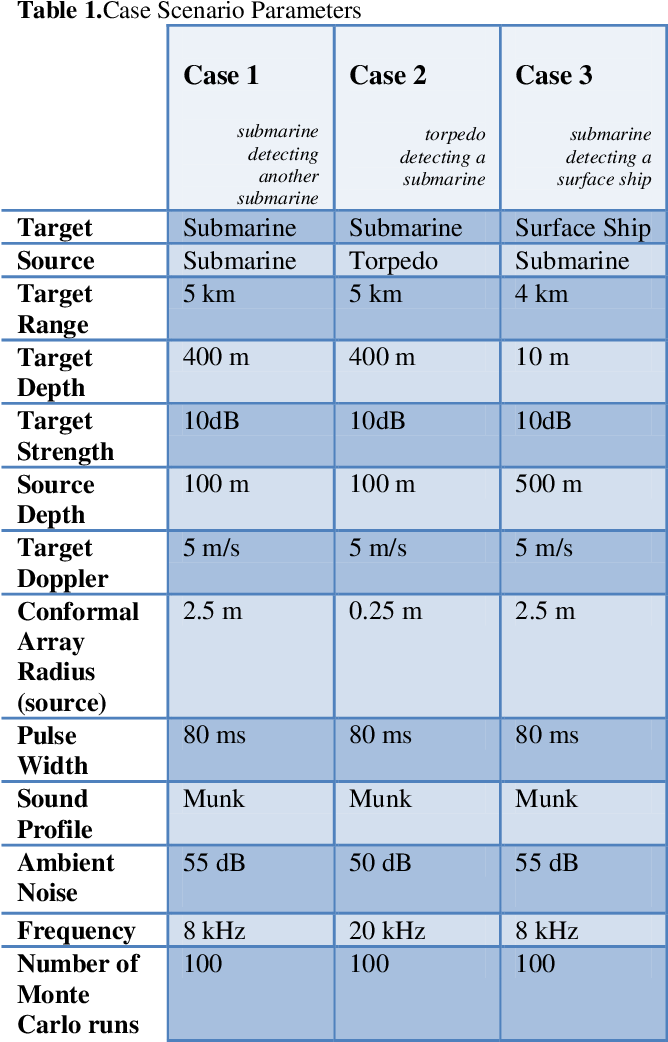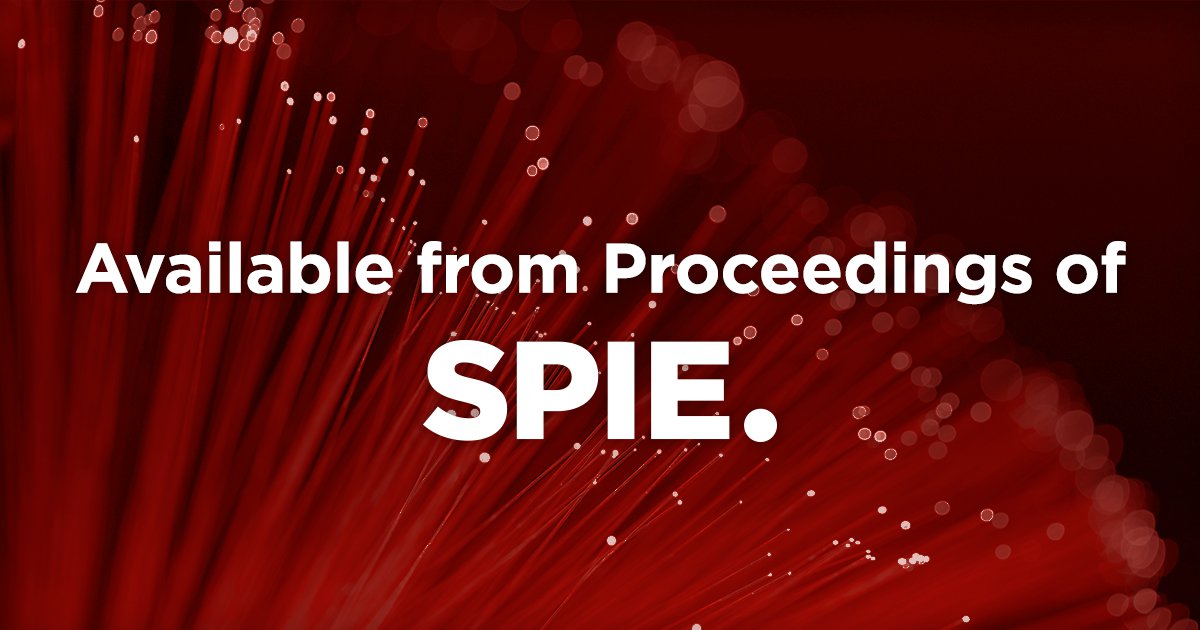I will share the archive in bulk. The article titles are as follows
Kinematic analysis of imaging seekers with roll-over-nod gimbal and a folded electro-optical layout (Erratum)
Kutlu D. Kandemir,1 Yigit Yazicioglu,2 Bulent Ozkan3
1ASELSAN A.S. (Turkey), 2Middle East Technical Univ. (Turkey), 3TÜBITAK SAGE (Turkey)
Optical flow assisted IRCCM algorithm for sea skimming anti-ship missile systems
Kemal Arda Özertem
Dept. of Guidance Design, Roketsan
Low dark current diffusion limited planar type InGaAs photodetectors
M. Halit Dolas*a, b, Okan Atesala, M. Deniz Caliskana, Alpan Bekb, Ekmel Ozbaya
a Nanotechnology Research Center (NANOTAM)
Bilkent University, Ankara, Turkey
b Micro and Nanotechnology Department
Middle East Technical University, Ankara, Turkey
Design of dual mode seeker for millimeter wave and four quadrant detectors in missile application
Doğan Uğur SAKARYA
Prof. Dr. Hüseyin SARI
Tactical Missile Systems Group, Roketsan,
Lock-on range estimation in an air-to-air engagement situation
Birkan Cetin, Kutlu D. Kandemira
TÜBİTAK SAGE
Normally-off p-GaN gate InAlN/GaN HEMTs grown on silicon substrates
Melisa Ekin Gulseren1,2, Berkay Bozok1,2, Gokhan Kurt2, Omer Ahmet Kayal2, Mustafa Ozturk2, Sertac Ural2, Bayram
Butun2, Ekmel Ozbay1,2,3,4
1 Department of Electrical and Electronics Engineering, Bilkent University,
2 Nanotechnology Research Center, Bilkent University,
3 UNAM-Institute of Materials Science and Nanotechnology, Bilkent University,
4 Department of Physics, Bilkent University
Field Test and Fading Measurement of a Distributed Acoustic Sensor System over a 50 km-long Fiber
Faruk Uyara,b, Tolga Kartaloglub, Ibrahim Ozdurb,c and Ekmel Ozbaya,b,d
aDepartment of Electrical and Electronics Engineering, Bilkent University, Ankara, Turkey
bNanotechnology Research Center, Bilkent University, Ankara, Turkey
cDepartment of Electrical and Electronics Engineering, Abdullah Gul University, Kayseri, Turkey
dDepartment of Physics, Bilkent University
Disordered and Densely Packed ITO Nanorods as an Excellent Lithography-Free Optical Solar Reflector Metasurface for the Radiative Cooling of Spacecraft
Deniz Umut YILDIRIMa,b,c, Amir Ghobadia,b,c, Mahmut Can Soydana,b,c, Okan Atesala,
Ahmet Topraka, Mehmet Deniz Caliskana, Ekmel Ozbaya,b,c,d
a NANOTAM-Nanotechnology Research Center, Bilkent University
b Department of Electrical and Electronics Engineering, Bilkent University
c UNAM-Institute of Materials Science and Nanotechnology, Bilkent University
d Department of Physics, Bilkent University
Optical designs for MWIR and four quadrant detectors by using beam steering methods in missile applications
Doğan Uğur SAKARYA
Tactical Missile Systems Group

 app.blackhole.run
app.blackhole.run
A Comparison of MWIR and LWIR Imaging Systems with regard to Range Performance
Berk Berkan TURGUT*a,d, Göktuğ Gencehan ARTANa, Alpan BEKb,c,d
a Optical Design Division, TUBITAK SAGE; bThe Center for Solar Energy
Research and Applications (GUNAM), Department of Physics, Middle East Technical University (METU); dMicro and Nanotechnology Program of Graduate School of Natural and Applied Sciences, Middle East Technical University (METU)

 app.blackhole.run
app.blackhole.run
With love to our TAI engineer friend who downloaded the archive from the site and shared it with us ...
Kinematic analysis of imaging seekers with roll-over-nod gimbal and a folded electro-optical layout (Erratum)
Kutlu D. Kandemir,1 Yigit Yazicioglu,2 Bulent Ozkan3
1ASELSAN A.S. (Turkey), 2Middle East Technical Univ. (Turkey), 3TÜBITAK SAGE (Turkey)
Optical flow assisted IRCCM algorithm for sea skimming anti-ship missile systems
Kemal Arda Özertem
Dept. of Guidance Design, Roketsan
Low dark current diffusion limited planar type InGaAs photodetectors
M. Halit Dolas*a, b, Okan Atesala, M. Deniz Caliskana, Alpan Bekb, Ekmel Ozbaya
a Nanotechnology Research Center (NANOTAM)
Bilkent University, Ankara, Turkey
b Micro and Nanotechnology Department
Middle East Technical University, Ankara, Turkey
Design of dual mode seeker for millimeter wave and four quadrant detectors in missile application
Doğan Uğur SAKARYA
Prof. Dr. Hüseyin SARI
Tactical Missile Systems Group, Roketsan,
Lock-on range estimation in an air-to-air engagement situation
Birkan Cetin, Kutlu D. Kandemira
TÜBİTAK SAGE
Normally-off p-GaN gate InAlN/GaN HEMTs grown on silicon substrates
Melisa Ekin Gulseren1,2, Berkay Bozok1,2, Gokhan Kurt2, Omer Ahmet Kayal2, Mustafa Ozturk2, Sertac Ural2, Bayram
Butun2, Ekmel Ozbay1,2,3,4
1 Department of Electrical and Electronics Engineering, Bilkent University,
2 Nanotechnology Research Center, Bilkent University,
3 UNAM-Institute of Materials Science and Nanotechnology, Bilkent University,
4 Department of Physics, Bilkent University
Field Test and Fading Measurement of a Distributed Acoustic Sensor System over a 50 km-long Fiber
Faruk Uyara,b, Tolga Kartaloglub, Ibrahim Ozdurb,c and Ekmel Ozbaya,b,d
aDepartment of Electrical and Electronics Engineering, Bilkent University, Ankara, Turkey
bNanotechnology Research Center, Bilkent University, Ankara, Turkey
cDepartment of Electrical and Electronics Engineering, Abdullah Gul University, Kayseri, Turkey
dDepartment of Physics, Bilkent University
Disordered and Densely Packed ITO Nanorods as an Excellent Lithography-Free Optical Solar Reflector Metasurface for the Radiative Cooling of Spacecraft
Deniz Umut YILDIRIMa,b,c, Amir Ghobadia,b,c, Mahmut Can Soydana,b,c, Okan Atesala,
Ahmet Topraka, Mehmet Deniz Caliskana, Ekmel Ozbaya,b,c,d
a NANOTAM-Nanotechnology Research Center, Bilkent University
b Department of Electrical and Electronics Engineering, Bilkent University
c UNAM-Institute of Materials Science and Nanotechnology, Bilkent University
d Department of Physics, Bilkent University
Optical designs for MWIR and four quadrant detectors by using beam steering methods in missile applications
Doğan Uğur SAKARYA
Tactical Missile Systems Group

1 file shared with you
This file shared with BlackHole. Send any file using blockchain technology.
A Comparison of MWIR and LWIR Imaging Systems with regard to Range Performance
Berk Berkan TURGUT*a,d, Göktuğ Gencehan ARTANa, Alpan BEKb,c,d
a Optical Design Division, TUBITAK SAGE; bThe Center for Solar Energy
Research and Applications (GUNAM), Department of Physics, Middle East Technical University (METU); dMicro and Nanotechnology Program of Graduate School of Natural and Applied Sciences, Middle East Technical University (METU)

1 file shared with you
This file shared with BlackHole. Send any file using blockchain technology.
With love to our TAI engineer friend who downloaded the archive from the site and shared it with us ...









